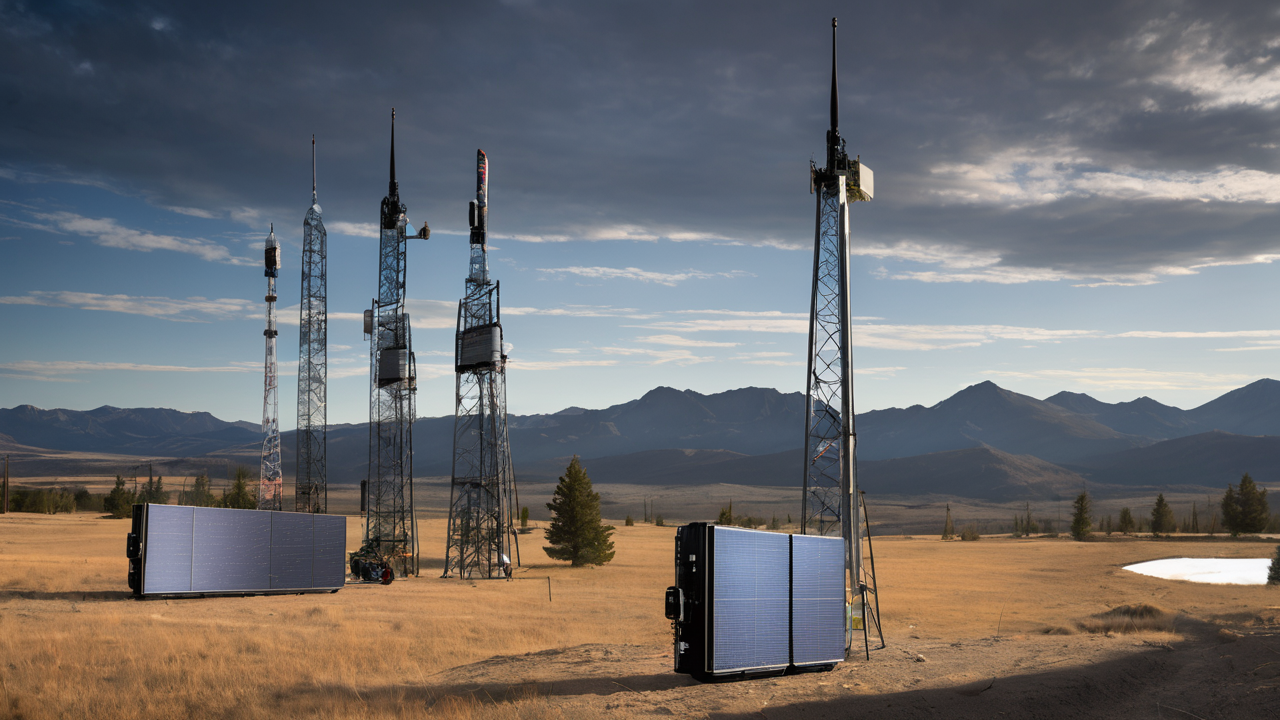Understanding Long Range Walkie Talkies
The Basics of Long Range Communication Devices
Long range walkie talkies are portable two-way radios designed for extended communication. They use radio waves to transmit signals over long distances. These devices are crucial for remote areas with no cell coverage.

Key components include:
- Antenna: Sends and receives signals
- Transmitter: Converts voice into radio waves
- Receiver: Picks up incoming signals
- Speaker: Produces sound from received signals
- Microphone: Captures voice for transmission
- Battery: Powers the device
Long range walkie talkies operate on specific frequencies. They often use UHF or VHF bands. The choice depends on the intended use and environment. UHF is better for urban areas, while VHF works well in open spaces.
Key Features to Look for in a 100-Mile Walkie Talkie
When choosing a 100-mile walkie talkie, consider these features:
- Range: Ensure it can reach the claimed 100-mile distance.
- Battery Life: Look for devices with long-lasting batteries.
- Durability: Choose models that are waterproof and shock-resistant.
- Channels: More channels allow for better communication options.
- Privacy Codes: These prevent interference from other users.
- Voice Activation: Hands-free operation for convenience.
- Weather Alerts: Built-in NOAA weather radio for safety.
- GPS: Some models offer location tracking.
- Bluetooth: For connecting to headsets or smartphones.
- Display: Clear, backlit screens for easy reading.
Remember, actual range depends on terrain and obstacles. Test the device in your specific environment for best results.
The Best 100-Mile Walkie Talkies on the Market
Leading Brands and Models
Several brands offer high-quality long range walkie talkies. Here are some top picks:

- Motorola T600 Talkabout:
- Waterproof design
- 35-mile range in open areas
- NOAA weather alerts
- Dual power options
- Midland GXT1000VP4:
- 36-mile range
- 50 channels with privacy codes
- NOAA weather scan and alert
- Whisper feature for quiet communication
- Cobra RX680:
- Rugged, floating design
- 38-mile range
- Built-in flashlight
- Voice-activated transmission
- BaoFeng UV-5R:
- Affordable option
- Dual-band operation (UHF/VHF)
- Programmable channels
- Long battery life
- Uniden SX377-2CKHS:
- 37-mile range
- 22 channels with 142 privacy codes
- Direct call feature
- Includes headsets for hands-free use
These models offer varying features. Choose based on your specific needs and budget.
Innovative Technologies Enhancing Range and Reliability
Modern long range walkie talkies use advanced tech for better performance:
- Digital Signal Processing (DSP):
- Improves audio quality
- Reduces background noise
- Enhances voice clarity
- Frequency Hopping Spread Spectrum (FHSS):
- Increases security
- Reduces interference
- Improves range in crowded areas
- Adaptive Power Management:
- Optimizes battery life
- Adjusts power based on distance
- Multi-Channel Operation:
- Allows simultaneous conversations
- Improves communication efficiency
- Mesh Networking:
- Extends range by relaying signals
- Creates a network of connected devices
- Antenna Diversity:
- Uses multiple antennas
- Improves signal reception
These technologies make 100-mile walkie talkies more reliable and effective.
Implementing 100-Mile Walkie Talkies in Various Industries
Military Applications and Tactical Advantages
Long range walkie talkies are crucial in military operations. They offer:

- Secure Communication:
- Encrypted transmissions
- Frequency hopping to prevent interception
- Extended Range:
- Communication in remote areas
- Coordination over large distances
- Durability:
- Rugged design for harsh conditions
- Waterproof and shock-resistant
- Multi-Channel Operation:
- Separate channels for different units
- Improved coordination in complex operations
- GPS Integration:
- Location tracking of personnel
- Improved situational awareness
- Long Battery Life:
- Extended field operations without recharging
- Reduces logistical burden
These features make 100-mile walkie talkies essential for military tactics and strategy.
Commercial Use Cases: Logistics, Event Management, and Emergency Services
Long range walkie talkies have diverse commercial applications:
- Logistics:
- Coordinate large warehouse operations
- Communicate with drivers over long routes
- Manage port and shipyard activities
- Event Management:
- Organize large outdoor events
- Coordinate security teams
- Manage staff across expansive venues
- Emergency Services:
- Coordinate search and rescue operations
- Communicate during natural disasters
- Maintain contact in areas with no cell coverage
- Construction:
- Coordinate workers across large sites
- Ensure safety communication
- Manage equipment and resources
- Agriculture:
- Communicate across vast farmlands
- Coordinate harvesting operations
- Manage livestock on large ranches
- Oil and Gas Industry:
- Coordinate operations in remote areas
- Ensure safety communication on oil rigs
- Manage pipeline inspections
These industries benefit from the reliability and range of 100-mile walkie talkies.


